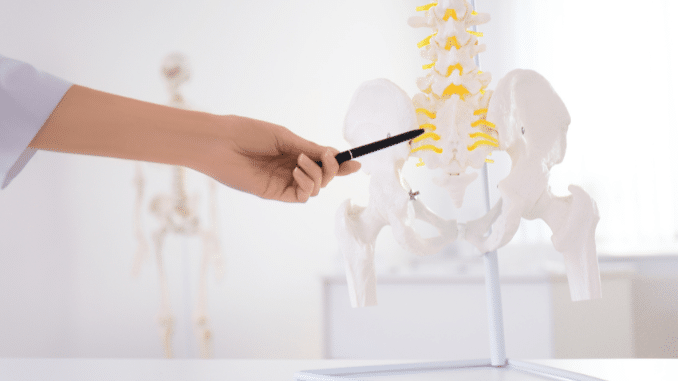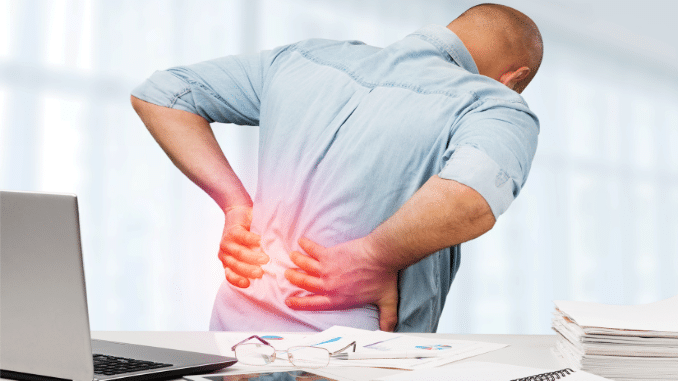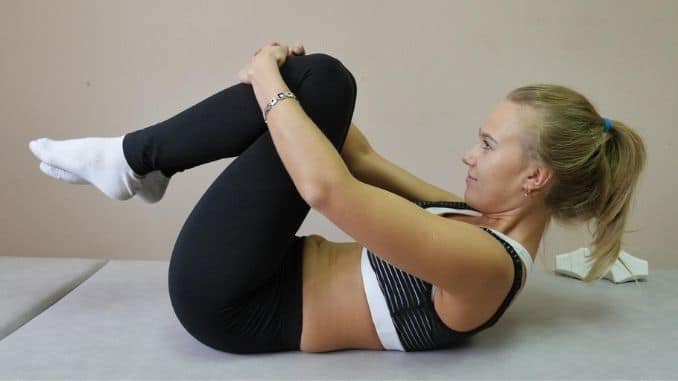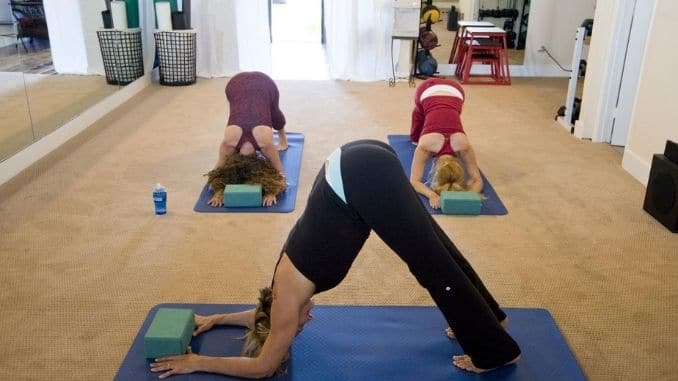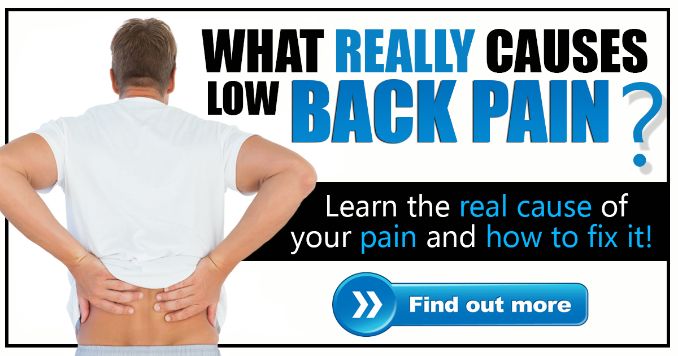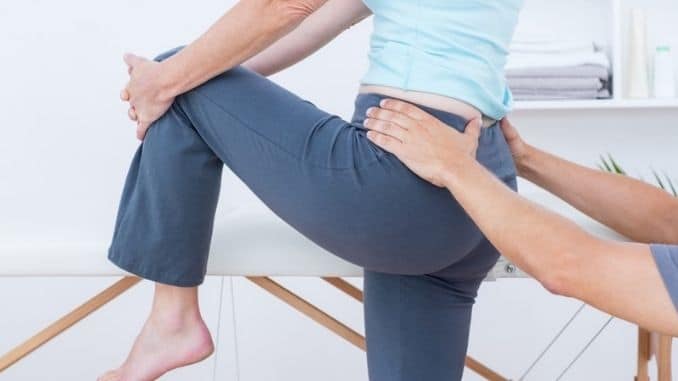
Camille cringed as she got up from her chair. During the past few months, she had noticed persistent pain in her tailbone area. Sitting for any length of time would result in a throbbing pain that tended to radiate up and down her spine while standing for hours wasn’t much better.
Camille finally went to see her doctor and was diagnosed with coccydynia, the medical term for tailbone pain. She was relieved to hear that, in most cases, the condition can be treated with conservative methods, including rest, exercise and medication.
What Is the Tailbone?
Tailbone pain occurs at the very bottom of the spine, usually as a result of injury and inflammation in and around the tailbone, also called the coccyx.
This is a small, triangular bone at the end of the spine that resembles a short tail. It consists of three to five vertebrae or spinal bones, which may be fused to form a single bone or may have a separation between the first bone and the others.
Right above the tailbone sits the sacrum, which connects the tailbone to the lower spine and sits between the hipbones, forming the back of the pelvis. It is also triangular-shaped, although it is larger than the tailbone. Both the sacrum and the tailbone are weight-bearing bones that are critical to functions like walking, standing, and sitting.
The tailbone connects to the sacrum through the sacrococcygeal joint, which typically allows only limited movement between the tailbone and the sacrum. The tailbone may move slightly forward or backward, for example, when the pelvis, hips, and legs move, particularly when you sit down or get up from a seated position.
Although scientists believe that, overall, we don’t need the tailbone, it does provide some balance and stability when we are in a seated position. It also serves as the connecting point for the pelvic floor muscles, which support the vagina in females, aid in defecation and are involved in movements like walking and running.
What Is Chronic Tailbone Pain or Coccydynia?
Coccydynia refers to pain or tenderness in and around the tailbone. This can be caused by several different factors.
-
Injury or Trauma
This is the most common cause of tailbone pain. You may have fallen back on your tailbone, injuring it or created injury through repetitive activities like horseback riding or cycling. An impact injury can injure the tailbone itself, breaking or bruising it, although bruising is more common. Even sitting on a hard surface for a long time can cause coccydynia.
-
Gender
Coccydynia is much more common in women than in men. In a 2014 study, researchers noted that both obesity and female gender can increase the risk of the condition.
This is likely because of the following factors:
- Women have a broader pelvic structure meant to accommodate a baby, which can leave the coccyx more vulnerable to injury.
- Women usually place more weight on the coccyx when sitting.
- Childbirth increases stress and strain on the tailbone as the baby moves through the birth canal.
- Women often suffer from pelvic muscle cramps that can increase coccyx pain.
Vaginal childbirth, particularly when it is difficult or when there are complications present, can increase pressure on the tailbone and the ligaments around it, resulting in bruising and pain. In some cases, childbirth can cause a coccyx fracture.
-
Degenerative Joint Disease
Wear and tear from aging and repetitive motions can damage the coccyx gradually. Osteoarthritis, which damages joints over time, can also be a factor if it affects the tailbone and the joint connecting it to the sacrum. Disc degeneration at the sacrococcygeal joint or the joints between the tiny bony pieces of the tailbone can also lead to pain.
-
Nerve Pain
The ganglion impar is a collection of nerve cells next to the tailbone. In cases of chronic pain, it is often these nerves that are to blame. They may be chronically inflamed or damaged. According to a 2017 study, a local anesthetic block of the ganglion impar provided significant pain relief for patients with coccydynia.
-
Referred Pain
Sometimes, the pain a person feels in the tailbone isn’t coming from the tailbone at all but another nearby area. Conditions or problems with the rectum, colon or other organs could refer to pain in the tailbone area. This sort of pain won’t feel like it comes directly from the bone but some area close to it.
-
Unique Coccyx Morphology
If the tailbone is formed differently than usual, it can cause problems. Some people have a bone spur or bony grown at the lowest tip of the tailbone, for example, and this can become irritated while sitting.
Sometimes, the bones that make up the tailbone move more than they should, creating instability that can lead to inflammation and pain. Other spinal deformities, like scoliosis, may lead to tailbone pain.
-
Pelvic Floor Muscle Issues
If the pelvic floor muscles—those muscles that support the pelvic organs like the bladder, bowel, and uterus—become tight or inflamed or if they go into spasm, they can cause tailbone pain because they are attached to the tailbone. If muscles are the problem, the pain will usually feel dull and aching.
-
Pilonidal Cysts
These are fluid-filled growths that develop near the tailbone just above the anus. They usually contain hair and skin and are believed to be caused by the penetration of loose hairs into the skin and lower tissues. Pressure and repetitive trauma to the area can increase vulnerability to these cysts.
-
Bone Spurs
The growth of bony spurs on the coccyx can make the area super sensitive to surfaces, resulting in inflammation and pain.
-
Infections
Although rare, infections can sometimes set in the tailbone area, causing swelling and pain along with warmth, redness and, sometimes, drainage. Other signs of an infection may include a fever, and the area around the tailbone may feel warm to the touch.
-
Cancer
This is another rare cause of tailbone pain, but it is possible for a malignant tumor to develop in or around the tailbone. Also very rarely, the bone itself may develop bone cancer.
-
Unknown
For a small number of coccydynia cases, there is no known cause.
Symptoms of Coccydynia
Some of the most common symptoms of chronic tailbone pain include:
- Discomfort and pain at the base of the spine, where the tailbone is located
- Referred pain in the lower back and/or hips
- Shooting pains down the leg
- Pain that gets worse over time
- Pain that may feel dull and achy at times and then become sharp when sitting, rising from a seated position or prolonged standing
- Painful defecation
- Painful sexual intercourse
- Uncomfortable menstruation
- A lump or mass on the tailbone (rare)
- Redness, warmth or swelling near the tailbone
Factors that can increase your risk of the condition include:
- Female gender
- Overweight and obesity
- Sitting for long periods, particularly on hard surfaces
- Prolonged standing
- Pregnancy and childbirth
How Can You Ease Tailbone Pain?
If you have chronic tailbone pain that lasts for more than a few weeks, it’s best to check with your doctor to rule out any serious causes such as an infection. Treatment for coccydynia usually involves conservative methods like the following.
a. Ice and Heat
Both of these can help ease pain and bring relief. Use ice when you’ve been sitting for too long or after a trauma to the tailbone. Use heat to ease tight muscles and help the area relax. Apply for 10 to 15 minutes at a time.
b. Pain Medications
You can start with over-the-counter pain remedies to relieve discomfort. If these don’t work, doctors may recommend injections and nerve blocks.
c. Sit Differently
When you have tailbone pain, sitting is usually painful. To address this issue, try sitting on an ice pack or heating pad and use a wedge-shaped cushion with a hole in the back to relieve pressure on the sensitive area. Then, get up and move around frequently.
It also helps if you practice leaning forward when you sit down. This will position your pelvis in a way that will take some pressure off the coccyx.
d. Massage
If you have tight pelvic floor muscles, massage in this area can help release tension and trigger points, allowing the muscles to relax and release strain on the tailbone. Look for a massage therapist that is experienced in pelvic floor massage.
Massage can also help in cases where the ligaments and tissues around the coccyx are tight or in spasm. If you feel a sharp point of pain, massage with a tennis ball may help relieve it.
e. Take Care of Your Digestive Health
Straining can be painful for those with tailbone pain, so it’s important to manage your digestion. Make sure you’re getting enough fiber in your diet and exercise regularly to keep things moving. Try not to strain or push when defecating.
f. Physical Therapy
A physical therapist can show you stretches and exercises to help ease tailbone pain. We’ve included some examples of these below.
g. Surgery
Most of the time, conservative treatments used over time will result in tailbone pain relief. Only rarely is surgery needed. The most common procedure is called “coccygectomy,” and involves removing part or all of the coccyx. It usually takes time to feel results and, sometimes, the surgery doesn’t work.
5 Stretches and Exercises to Help Ease Tailbone Pain
These are all exercises you can try at home for relief of coccydynia.
1. Single-leg Knee Hug
This stretch addresses muscles in the pelvis that can become tight and irritate the nerves around the tailbone. Lie down on your back with your legs straight out on the floor. Bend the right knee toward your chest. Grab with both hands underneath the knee and pull it gently into your chest. Hold for 30 seconds and repeat on the other side.
2. Cross Leg Stretch
This is similar to the one above, with one variation that helps stretch the muscles in the glutes that are attached to the tailbone. While you have the right knee bent toward you, take your left hand and place it on the outside of the knee. Then, let the knee fall across your body gradually toward the floor. When you feel the stretch in your glutes, hold for 30 seconds. Repeat on the other side.
3. Cat-cow
This stretch helps increase spine mobility, taking the pressure off your tailbone. Start on all fours with your feet flat, shoulders directly over your wrists and hips over your knees. Arch your back slowly while keeping your shoulders back and down (the cow), then press into your hands, and round the upper back (the cat). Repeat slowly 10 times.
4. Downward Dog
If you’re familiar with yoga, you know this pose. It helps lengthen the backs of your legs so they’re not pulling on your spine, which can help ease tailbone pain. Again, start on all fours, then tuck your toes under, and lift your hips to the ceiling as you push into your hands.
Lift gradually until your legs and arms are straight and your body forms an inverted “V” shape. Hold for 60 seconds, then allow your knees to drop down to the floor gradually and relax. Repeat three or more times.
5. Kneeling Psoas Stretch
This exercise stretches the muscles around the hips. These muscles often become tight and stiff with prolonged sitting and can pull on the tailbone, causing pain. Loosening them up can help ease symptoms.
Start on all fours, and then step your right leg up between your hands and lift your torso so that you’re in a kneeling, upright position. Keep the left knee and shin flat on the floor, and make sure your raised knee is at a 90-degree angle, the heel directly under the knee. Lean forward slowly into a lunge-like position until you feel the stretch on the inside of the hip. Hold for 20 to 30 seconds, then relax back and repeat. Perform the stretch on both sides.
You can deepen this stretch by placing both palms on the outside of the raised right knee. While keeping the back straight, twist around to the right gradually, deepening the stretch in the hips and lower spine.
For your guide to eliminating lower back pain, check out Low Back Pain Solved, here!

